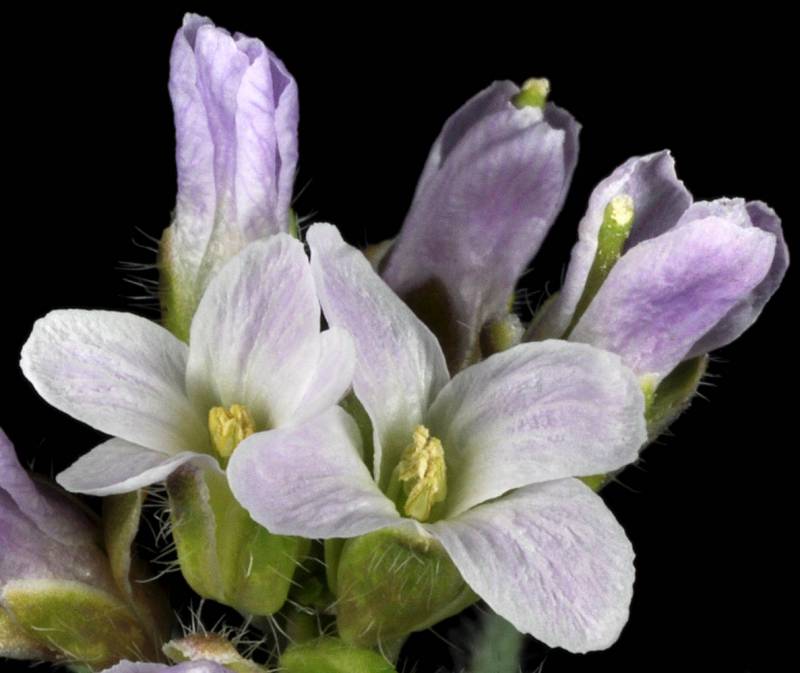Boechera puberula
Boechera cusickii
Blue Mountain rockcress, hoary rockcress
Cusick's rockcress
Basal leaves oblanceolate to narrowly oblanceolate, 1.5-5 mm broad, margins typically toothed, not ciliate, densely pubescent above and beneath with 5-12-rayed trichomes on short-stalks and up to 0.2 mm;
cauline leaves 7-45, hiding the stem near base, lobe-like appendages at base absent or 0.7-3 mm, surfaces pubescent towards ends of stems.
Basal leaves numerous, linear-oblanceolate, 1-4 cm. long and 1.5-3 mm. broad, narrowed to a slender petiole, usually entire, conspicuously hairy on both surfaces and the margins with stiff, long, simple or forked hairs;
cauline leaves alternate, numerous, overlapping, sessile, 1-3 cm. long, pubescent as the basal leaves.
Inflorescence usually 10-40-flowered, typically unbranched racemes; fruiting pedicels pendent, curving downward towards ends to horizontally spreading to ascending at base, 4-10 mm, pubescent with trichomes appressed and branched, occasionally slightly secund;
flowers ascending to descending;
sepals 4, pubescent;
petals 4, white to pale purple, 5-9 mm long and 0.8-1.8 mm broad, glabrous;
pollen ellipsoid.
Inflorescence of 3- to 25-flowered, simple or occasionally compound racemes, somewhat flat-topped in flower;
pedicels stout, 5-12 mm. long, glabrous;
sepals 4, purplish, 4-5 mm. long, with soft hairs, not gibbous-based;
petals 4, nearly white to deep pink, 6-10 mm. long;
stamens 6;
style none.
Siliques glabrous, 4-7 cm. long and 2-3 mm. broad, 1-nerved to mid-length, strongly veined, ascending, the upper portion often curved until horizontal;
seeds in 1 series.
Siliques 3-6.5 cm long and 1.9-2.2 mm broad, closely pendent, uncommonly appressed to rachis, generally not curved, with parallel edges;
valves pubescent;
seeds in 1 series, 1.4-1.8 mm long and 1-1.4 mm broad, with a continuous wing to 0.3 mm broad.
Boechera puberula
Boechera cusickii
- Local floras:
CA,
OR,
WA
- Local Web sites:
CalFlora,
CalPhotos,
Flora NW,
PNW Herbaria
WildflowerSearch
iNaturalist (observations)
- LBJ Wildflower Center
- SEINet
- Plants of the World Online
- Encyclopedia of Life
- Wikipedia
- Google Image Search
- Local floras:
OR,
WA
- Local Web sites:
Flora NW,
PNW Herbaria
WildflowerSearch
iNaturalist (observations)
- LBJ Wildflower Center
- SEINet
- Plants of the World Online
- Encyclopedia of Life
- Wikipedia
- Google Image Search



